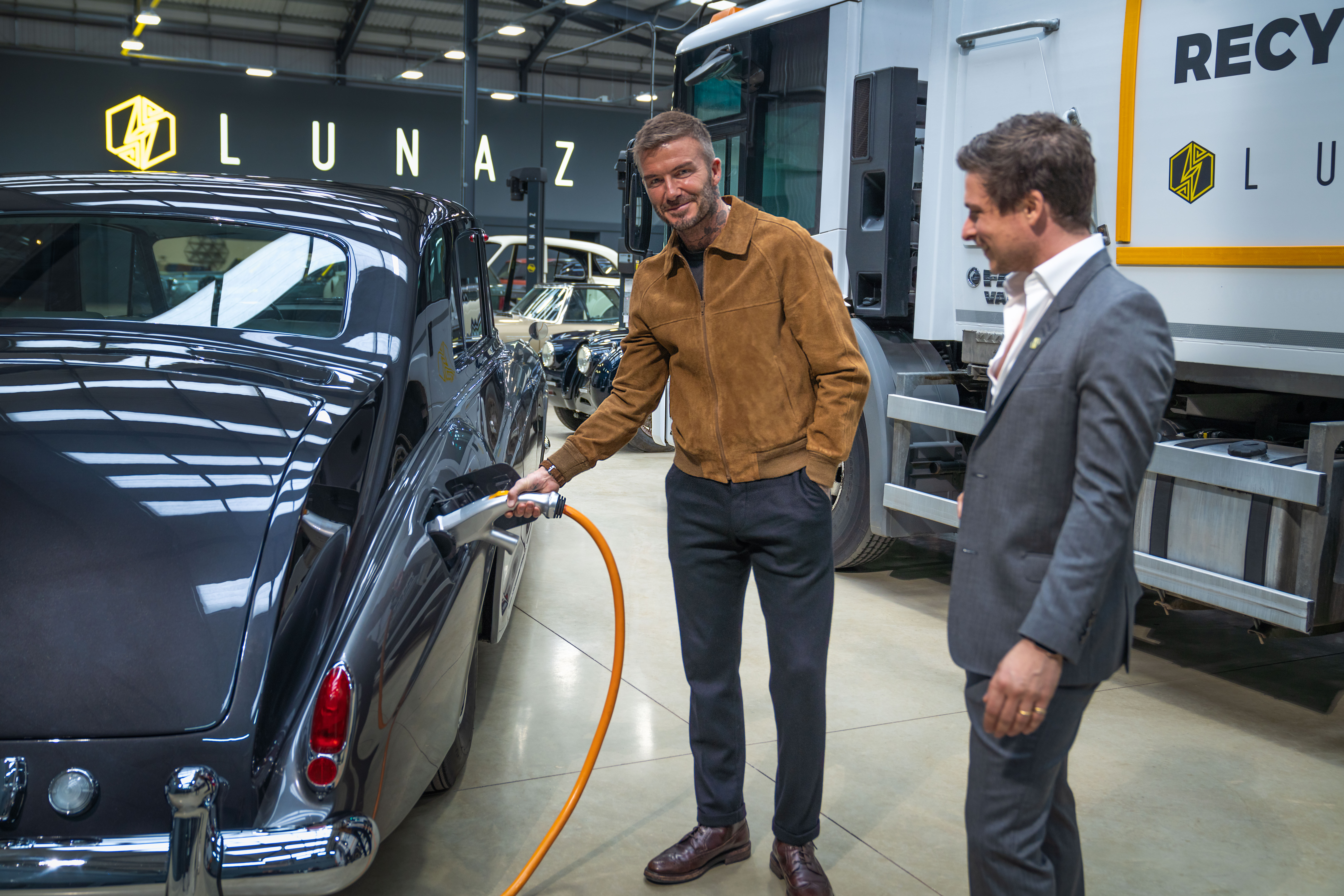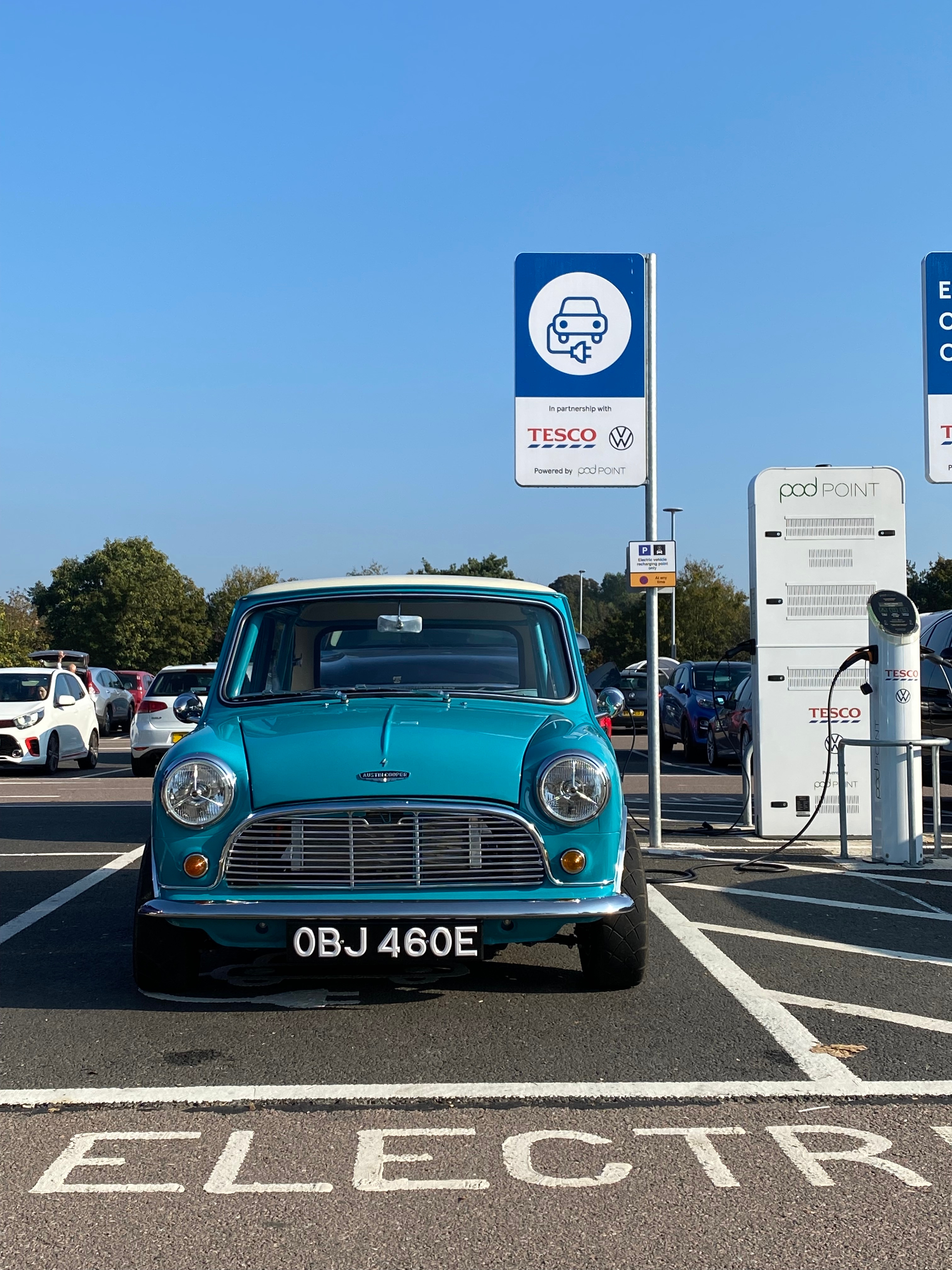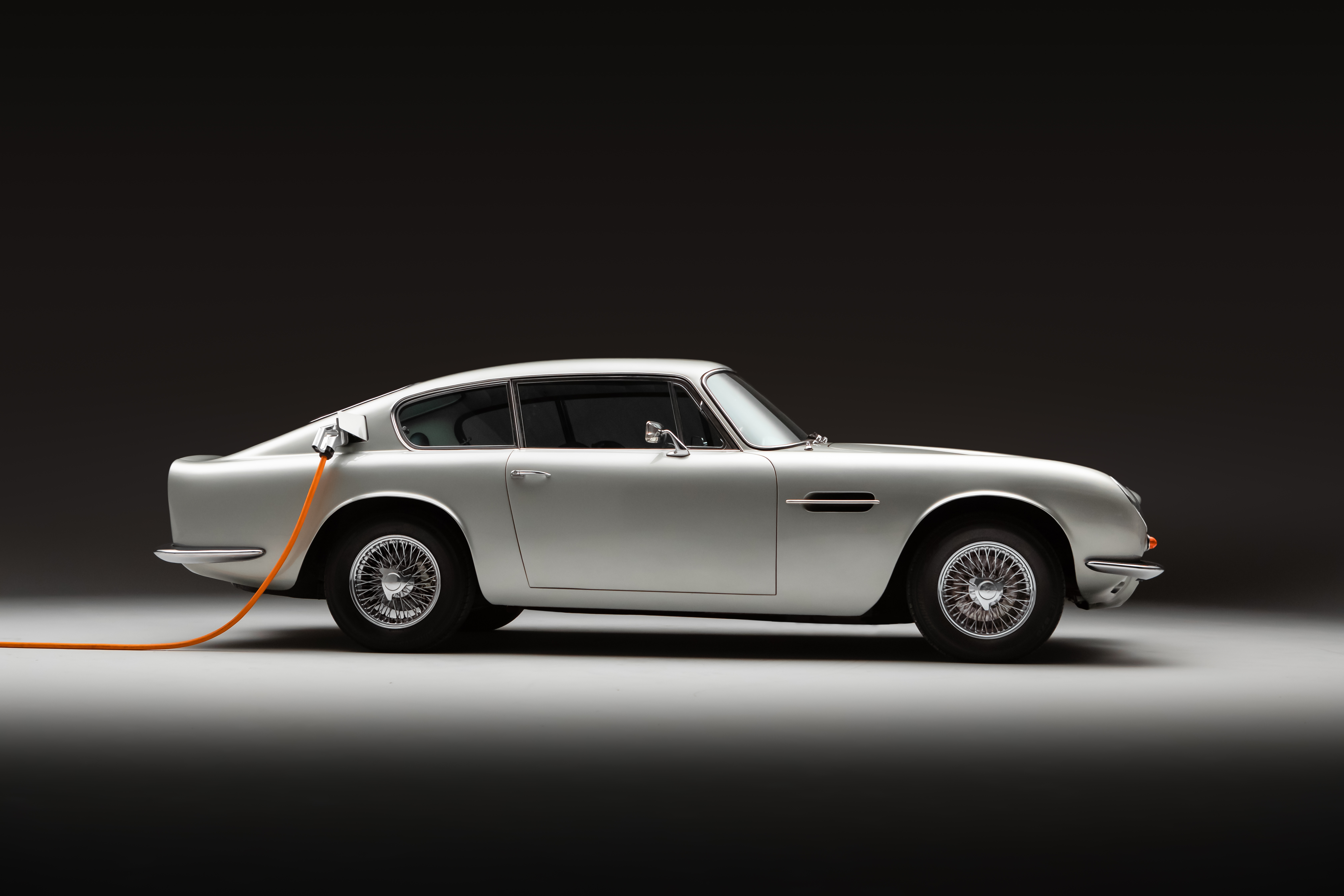Inspiration comes in unusual forms. David Lorenz’s lightbulb moment arrived when his classic Mercedes broke down. His small daughter was in the car, and Lorenz began thinking about ways to make it cleaner, more reliable and give it a long term usable future in a world that is turning its back on the internal combustion engine.
This led him to set up Lunaz Design, close to the Silverstone racing circuit in Northamptonshire. It’s high end old car restoration business that fits electric drive systems to sometimes exotic period Jaguars, Rolls-Royces and Aston Martins amongst others.
According to commercial director James Warren, giving treasured, collectable old cars electric heart transplants might be the start of a broader social trend to apply similar vehicular surgery to less coveted models. The costs will need to come down a bit first though. The company’s labour intensive, bespoke restoration/conversion is spectacularly expensive. The work will set a classic Range-Rover owner back £290,000. You can add another £100,000 for similar work on a Rolls-Royce Silver Cloud or a Jaguar XK sportscar, but this is small change compared to the £960,000 Lunaz quotes for working on an Aston Martin DB6, although this does include a donor car.
The old mechanical bits Lunaz removes either find their way into other vehicles, or even end up as decorative objects. Warren alluded to a coffee table made out of old car innards. For some classic car fans this sort of thing amounts to vandalising industrial archaeology, the equivalent of ‘improving’ an old master with a can of spray paint. Warren rejects this analysis.
‘We have all got to accept that the world is moving to cleaner power. We want future generations to see old cars enjoyed and driven. We’re furthering the legacy of these cars and we do that with enormous respect.’ He claims that fifty cars are currently under the knife in the Lunaz workshops, and orders are being taken for 2023.

Whilst EVs are clearly the future, that doesn’t mean we have to eliminate the past.
It’s unlikely that Andrew Fawkes will be joining the queue. For the past twenty years he’s owned a 1968 Aston-Martin DB6, and thinks getting rid of its engine would destroy the car’s charisma. Fawkes describes what lives under its bonnet as ‘a work of art that combines different surfaces, materials, finishes, levers, pulleys, wires, you name it, it’s in there. In the same way that people describe steam locomotives as “living beings,” the engine of a car – that is, any internal combustion engine– is its beating heart.’
He thinks the olfactory cocktail or ‘old car smell’ could be lost too. ‘That heady mixture of leather, wood, old cigars, fuel, exhaust smoke and countless other sources that have woven themselves into the carpets, seats and headlining of your classic car. It can’t be bottled but it’s universally loved.’
Fawkes also likes the rhythm involved in driving and old petrol car with a manual gearbox, and the thoroughbred noises made while he’s doing this. Lunaz, and other converters could counter that many of the tactile elements he loves survive in their vehicles, and that the instant, elastic performance, smoothness and silence of electric power are positives in themselves.
Both arguments have merit, and Fawkes insists he isn’t anti electric cars: ‘Whilst EVs are clearly the future, at least the current version of the future, that doesn’t mean we have to eliminate the past,’
Powys-based Richard Morgan is an electric classic car conversion pioneer. His Electric Classic Cars operation was one of the first of its kind, and he claims it’s now the world’s biggest. He likens what it does to installing modern heating into an old house. The house changes, but is still the same building.
Morgan was an energy saving consultant who liked old cars and motorsport (“I come from a petrolhead background”) and was amusing himself by supercharging and turbocharging a petrol engine to make it hellishly powerful, when he saw an American YouTube video of a VW Beetle battery conversion, realised that an electric motor would be far simpler and just as powerful.
He built his own electric Beetle, chronicling it on YouTube, a Porsche 911 owner saw this and asked him to repeat the exercise on his car, and a business was accidentally born.
Morgan’s conversions range in price from around £20,000 to £120,000, and he’s worked everything from bubble cars and tiny Fiat 500s to Ferraris, Range Rovers and Mercedes SL sportcars. Depending on batteries and motor power, his creations can travel between forty and two hundred miles.
He thinks millennials reckon classic cars are for old men, and aren’t interested in fixing them up or how they drive, and that emissions-free electric power will keep these cars relevant and on the road. He suggests extinction is the alternative.
‘We see all sorts of customers, from millionaires to people who’ve grown up with cars and remember them in the 1970s.’
One is Suffolk-based industrial designer Simon Benton, whose 1967 Mini is now fitted with a Tesla electric motor. In 1977 Benton’s dad gave the car to his mother as a Christmas present. Back then it had an 850cc petrol engine. Benton and his sister grew up with the Mini and learned to drive in it. By 1991 it was off the road and in bits, pending a restoration that Simon never got around to doing. That’s how it remained until 2018 when he exhumed it, deciding that converting it into an electric car would ‘future proof’ the Mini, and make it something his three teenaged daughters might actually like driving.

The end result looks period, but will get to 60 in 4.3 seconds, and is theoretically capable of about 125mph. His daughters like the car’s point and squirt driving characteristics -no gear changes are necessary- and its used for everything from Tesco shopping trips to howling round racing circuits.
‘Range is 140 miles. That’s equal to a modern electric Mini,’ says Benton. He’s coy about how much the car cost, although he could have bought a new electric sports utility for the same money, ‘but it would only have depreciated.’
One or two less desirable period features remain. ‘As soon as they sniff moisture, old Minis rust, but this one isn’t a garage queen. It gets used,” said Benton. “It’s more reliable and easier to drive too.’
Matthew Quitter runs London Electric Cars from a trio of railway arches in Vauxhall. Having started working life as a penurious musician and spent time running a publisher’s digital operation, he saw a video of a Californian VW Beetle electric conversion which was “really beautiful,” and decided to do something similar with a Morris Minor. ‘England was going through a bit of an upheaval, and it’s a very British car, so that resonated.’
Minis followed, and the company has worked on all sorts of old vehicles, particularly Land-Rovers. Much of the parts are taken from disembowelled Nissan Leafs electrics. Quitter is something of a re-cycling advocate, and expects that Teslas will eventually become popular donor vehicles. He hopes similar conversions for non-classics will eventually emerge, and is working on an old Volvo V90 estate, to see if this school run doyenne can make an affordable electric car.
‘I’m trying to create a mass market thing. We’ve got 40m cars in UK, and want to halve CO2 emissions by 2030. Does that mean scrapping 20m? Half a car’s CO2 emissions come from building it.’
Whatever your views on electric cars, and classic car conversions in particular, some serious engineering ingenuity has gone into making them. Perhaps in a few years E-Type Jaguars will whine rather than roar, but the craftsmanship involved will ensure they remain objects of desire.






Comments